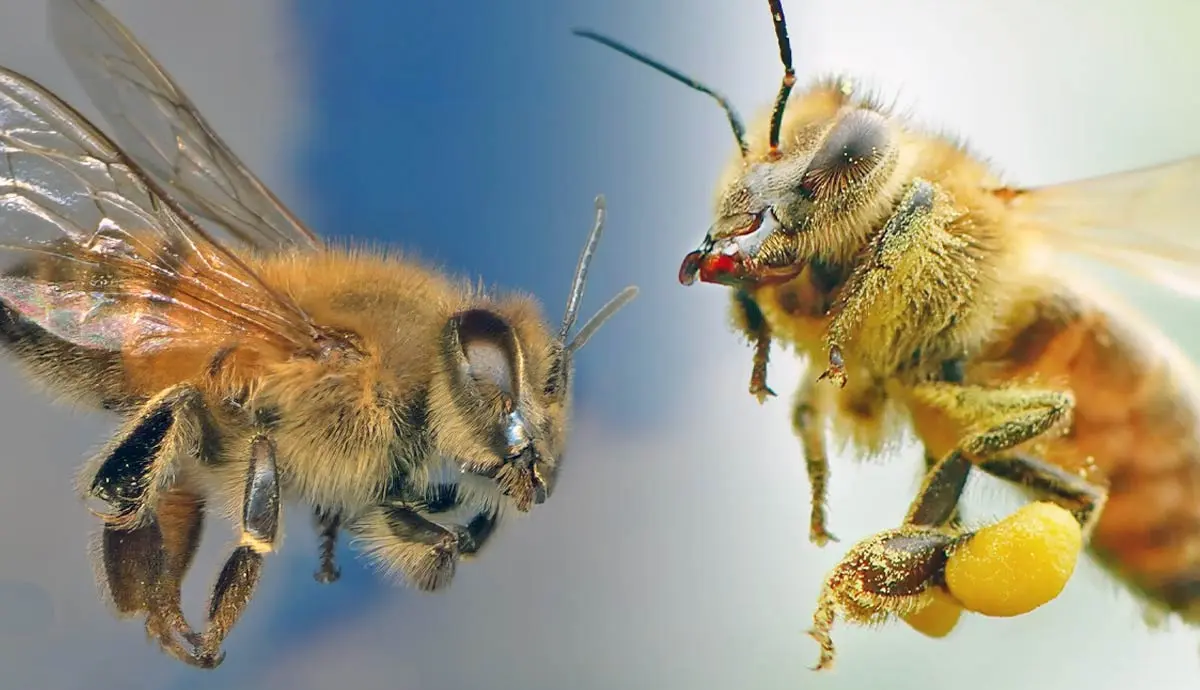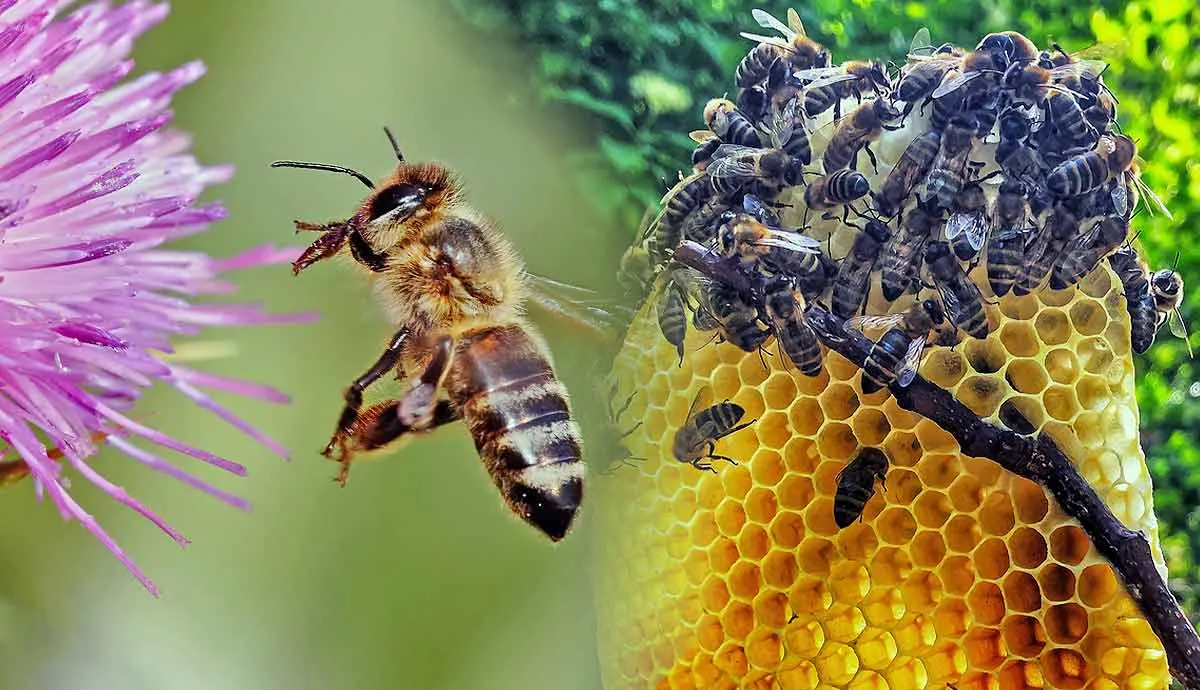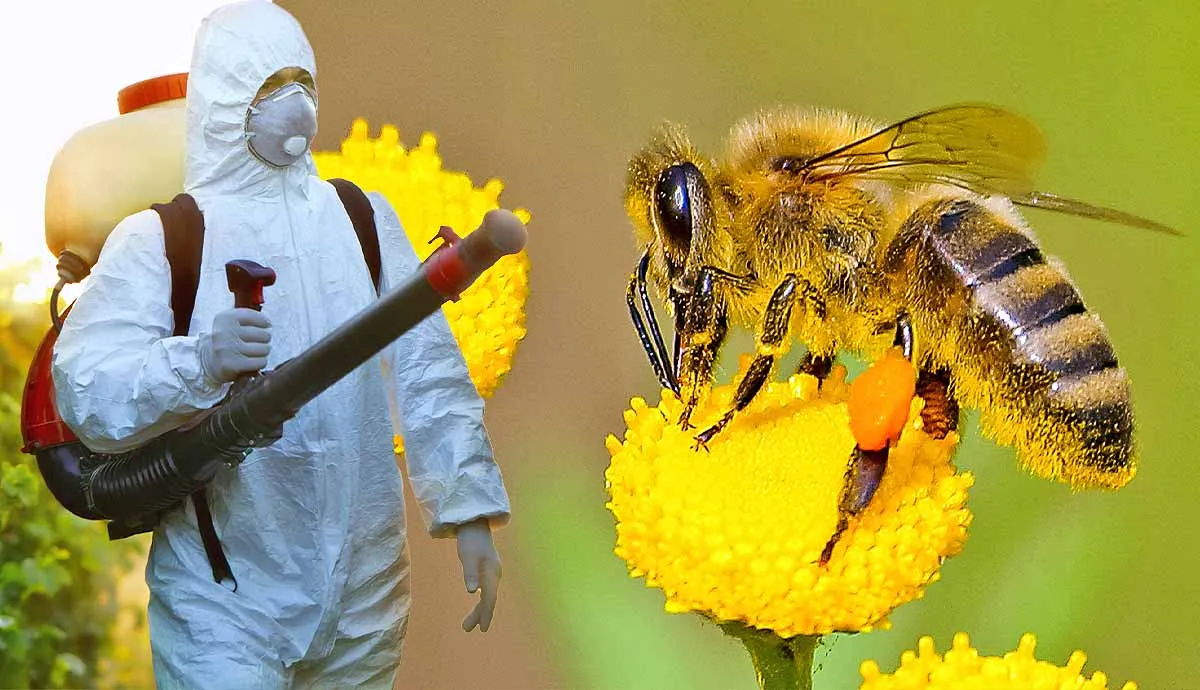There are many differences between goofy, fuzzy-butt honey bees, and territorial, aggressive killer bees. Killer bees are a hybrid between European and African bees. They were created by humans in the 1950s to produce more honey, and… it didn’t go as planned.
Honey bees are not native to North America. They were imported in the 17th century to promote the growth of nuts and fruits. While human intervention has always played a role in breeding honey bees, they are not considered dangerous or invasive.
Killer Bees Are Smaller Than Honey Bees

To the untrained eye, there are no physical differences between a killer bee (also known as the “Africanized bee”) and honey bees. The University of Florida notes that without specialized testing, even the most experienced entomologists can’t tell the difference between the two based on size alone. Yet, upon a closer look (a much, much closer look), killer bees are slightly smaller.
Honey Bees Are Generally More Easygoing

Let’s get one thing straight: both killer bees and honey bees sting to protect themselves and the hive. However, here’s a situation that illustrates the difference in demeanor.
Suppose that someone stumbles upon a honey bee hive in a rotted tree. If disturbed, the hive will dispatch 10 to 20 guard bees to assess and ward off the threat. The guard bees may follow the person for about 20 feet, then return to the hive.
Now, in the same situation, imagine that someone finds a killer beehive. Africanized bees are 10 times more aggressive than honeybees, and they’ll dispatch several hundred bees with one goal: attack. Rather than lose interest 20 feet in, they’ll follow the threat for 120 feet––perhaps even farther.
Long story short: while both types of bees sting, honeybees are generally more docile than their combat-ready counterparts.
Honey Bees Have Massive Colonies

Honey bees have one main goal in life: to serve the hive. This involves taking care of larvae, tending to the queen bee, and making honey. A happy and healthy honey bee hive has a lot of working parts, and as such, a massive bee colony that can have to up 60,000 members!
Killer bees have their passion set elsewhere. Rather than focus exclusively on the hive’s operations, these bees are more concerned with fighting off threats and swarming. This is when the hive splits off into two separate groups because the hive’s living quarters have become too cramped.
Killer bees must not like tight quarters; their hives seldom have more than 10,000 members.
Killer Bees Are Little Defense Machines

Imagine that a threat endangers a honeybee hive and a killer beehive. Here’s what to expect from both:
- The killer bees will respond to the threat in under five seconds, with hundreds of bees ready to neutralize it. Although a killer bee dies after it stings someone, there’s strength in numbers. One could suffer hundreds of stings in a showdown with a swarm of Africanized bees. The bees themselves will also stay agitated for days after the threat––ready to attack again if need be.
- The honey bees will respond to a threat a lot slower, taking up to 30 seconds to dispatch 10 to 20 guard bees to see what’s going on. Because honey bees don’t send as many troops to sting a threat, a showdown with angry honey bees is very unfortunate, but usually not deadly. What’s more, the honeybees only stay agitated for about 30 minutes. Who has time to be upset when there’s honey?
Needless to say, nobody should approach a beehive to “get a closer look.” Instead, they should leave bee-watching and beekeeping to the professionals.
Killer Bees and Honey Bees: Two Origin Stories

Both killer bees and honey bees have very different beginnings. One is the tale of classic synergy between man and insect. The other is a story of human intervention gone wrong.
Honey bees: Working with Man Since 1622
According to the U.S. Department of the Interior, honey bees were introduced to the United States from Europe in the 17th century. The first successful beekeeping colony was in Jamestown, where the settlers partnered with the docile honeybee to pollinate flowers, produce crops, and culture different fruit varieties. Over time, honey bees spread from Virginia to other parts of North America, where they play an integral role in today’s ecosystem.
Killer Bees: Byproduct of Science Gone Awry
Nobody sat down and said, “Hey! Let’s create a species of angry, invasive bees.” Instead, Africanized bees were the byproduct of an experiment that didn’t go as planned.
In the 1950s, Brazilian scientists were tasked with creating a more productive species of honeybee. They thought that combining the European honeybee with the African honeybee would be a good idea. After all, African honeybees were able to withstand hotter climates, and they were thought to be more productive.
To some extent, the experiment was successful! Yet, some of the Africanized bee queens escaped and made colonies with local populations. This offshoot led to what many call killer bees, as they were more aggressive and territorial than their ancestors. They later spread from Brazil to Central America, Mexico, and the southeastern United States.
Killer Bees Get Bad Buzz

It’s worth noting that the name “killer bee” is somewhat sensationalized. While not to be trifled with, killer bees cause 16 deaths in the U.S. each year. The following animals do a lot more damage than that, per a 2021 report from USA Today:
- Brown bear, 70 annual fatalities
- Snakes, 57 annual fatalities
- Sharks, 57 annual fatalities
- Black bears, 54 annual fatalities
- Alligators, 33 annual fatalities
- Cougars, 16 annual fatalities
Of course, there’s always the occasional headline about killer bees supposedly “at it again.” However, these stories are few and far between. Aside from their large swarms and drop-of-a-hat temper, Africanized bees share many of the same traits that their fuzzy cousins do.





